A Guide To Restaurant Health And Safety

There are a lot of factors to consider when it comes to restaurant health and safety. As well as making sure staff are kept safe, customers also need to be looked after, and food standards must be adhered to. Every restaurant, whether big or small, will need a restaurant risk assessment to make sure the venue is fit for purpose and safe for everyone working and dining there.
The Health and Safety Executive (HSE) sets out clear standards for catering health and safety, with information about the potential risks and how to minimise them in hospitality venues, including restaurants. This guide explains the specific risks in a restaurant, what is expected from a restaurant risk assessment, and how restaurants can adhere to food safety guidelines to protect their business and their patrons.
The Importance Of Restaurant Health And Safety
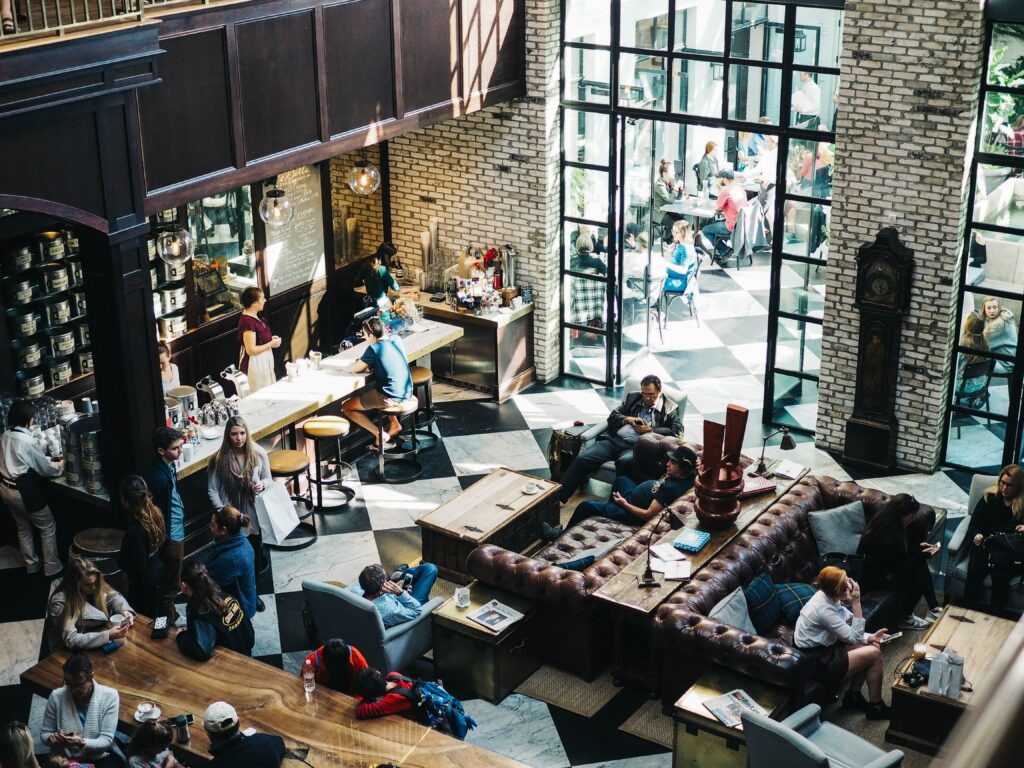
Health and safety legislation dictates that all workplaces must follow certain guidelines. When it comes to health and safety in a restaurant, this also extends to customers and is perhaps even more relevant owing to the increased hazards. There can be a large number of things happening at once in an eating establishment at any given time. Restaurant health and safety starts with the kitchens, which are bustling places with hot surfaces and sharp instruments. In addition, restaurant floors are filled with trip hazards, and the food itself can pose a risk if not cooked properly. With so many elements involved, the chances of an accident happening are much higher than they might be in a quieter environment, such as an office.
Identifying these risks and determining how they can be avoided or reduced is integral to the safe running and subsequent success of a restaurant. This is why restaurant health and safety policies exist, and why every establishment must complete a restaurant risk assessment.
Hazards In A Restaurant
Every restaurant faces its own challenges depending on the size of the venue, the type of food served, or even staff numbers. However, there are several risks in a restaurant that are universal and will affect every hospitality business in some way. These are the most common hazards in a restaurant that should be identified as part of a health and safety risk assessment:
1. Fire
There are a significant number of fire hazards in a restaurant, including cooking appliances, open flames, and electrics. Many restaurants will also have an abundance of flammable substances like alcohol and cleaning supplies on the premises. As part of a restaurant risk assessment, it is therefore crucial to identify and list all fire risks and make sure there’s a stringent fire risk assessment in place and an appointed fire marshal to oversee fire safety.
2. Knives And Sharp Objects
Restaurants are full of sharp and dangerous objects, from cooking knives or cleavers to slicing utensils and broken glassware. Cuts and lacerations are common in the restaurant industry, and the HSE has a dedicated section about the use of knives to help inform processes for compliant health and safety in a restaurant. Serious or deep cuts need to be recorded under RIDDOR to reduce the likelihood of them happening again.
3. Burns
Burns and scalds can happen for several reasons in a restaurant. Typical risks in a restaurant that cause burns include hot surfaces, boiling liquids, and heated equipment. These types of hazards are everywhere in a restaurant, but with adequate hospitality health and safety training and control measures, they can be reduced.
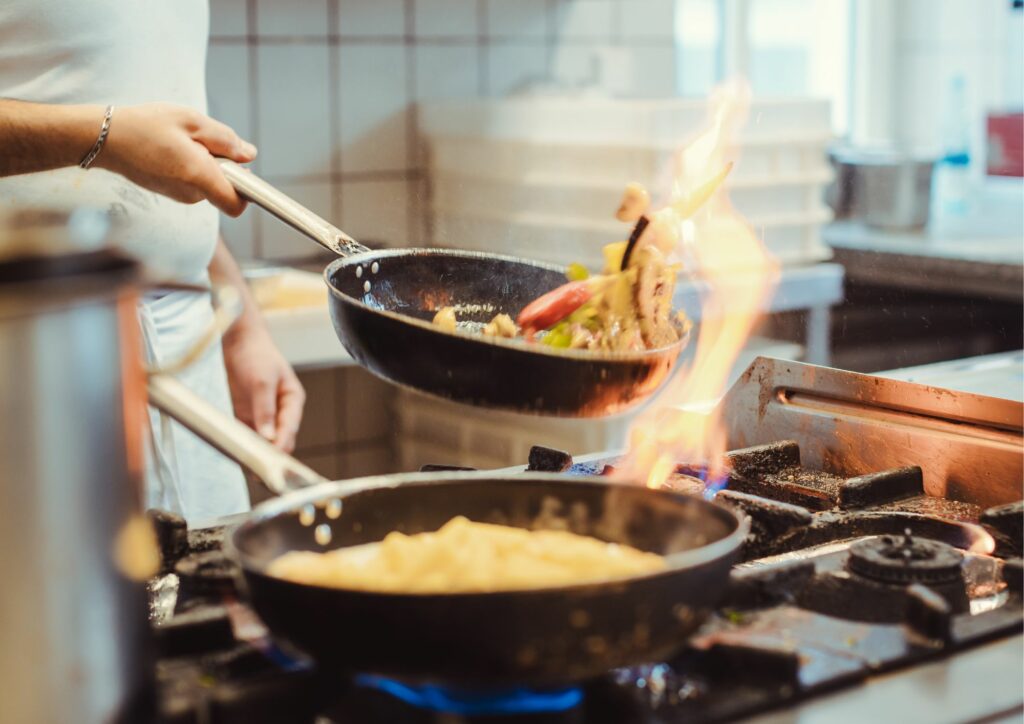
4. Slips And Trips
Restaurants are busy places with plenty of patrons filling the seats. However, this buzzing environment can be a hazard that has the potential to cause slips or trips. Tables and chairs can easily be bumped into, carpets can be tripped over, and poor lighting can make it difficult to see where you’re going. Carrying heavy trays of food can add to this hazard, as can food and drink spillages.
5. Harmful Substances
Restaurants contain several substances that could be harmful if not used correctly. Harmful substances that are considered hazards in a restaurant can include cleaning products, food preparation items, smoke, and carbon monoxide. Overexposure to cleaning products can cause dermatitis or other allergen-based problems like asthma. Restaurant health and safety measures should include a COSHH assessment to protect staff from these hazards.
Food Health and Safety
Food health and safety is an entirely separate topic with many rules and regulations. The last thing any restaurant wants is for customers to get ill. Food poisoning could put people at serious harm and may also significantly damage the reputation of the restaurant. This is why proper food health and safety procedures must be adhered to. The Food Standards Agency (FSA) has very detailed information about food safety but as a brief overview, which covers:
- Storage – all food should be stored at the optimum temperature. Food items should also be stored separately from one another to avoid cross contamination
- Preparation – when preparing food, specific guidelines should be followed, such as using different chopping boards and utensils for different products, and sticking to the correct cooking temperatures to make sure food is thoroughly cooked
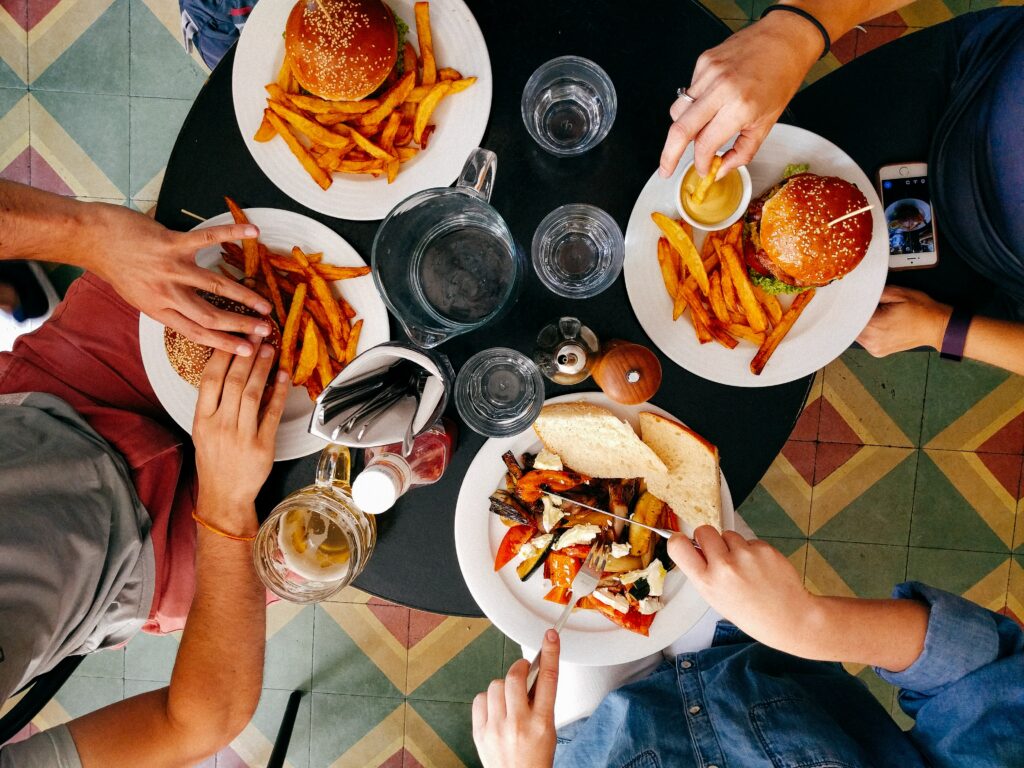
- Environment – the kitchen and preparation space should be clean, and restaurant health and safety protocols should include stringent rules around hygiene. Anyone coming into contact with food should wash their hands thoroughly beforehand to reduce the spread of germs and infection
- Allergies – there are many types of food allergies to be aware of and these can pose significant risks in a restaurant. Correct labelling and ensuring there is no cross contamination is a legal requirement to protect anyone with allergies. Risk assessments must factor this in with regards to storing, preparing, and serving food to make sure no one has an allergic reaction.
- Staff training – keeping staff up to date with the latest legislation and ensuring they know how to handle, store, and prepare food is essential for maintaining good health and safety in a restaurant
What To Include In A Restaurant Risk Assessment
A robust restaurant risk assessment will start by identifying the risks in a restaurant. Once any hazards have been established, the risk assessment should then cover accident prevention measures. Control measures in a restaurant risk assessment may include:
Fire Safety
Make sure there’s an appointed fire marshal or warden who has undertaken fire marshal training, and check fire escapes regularly to ensure there’s a clear path to safety. Fire escape routes should be free from obstructions, and appropriate signage and fire safety equipment should be available.
Ventilation
Kitchens and restaurant floors should have adequate ventilation to clear any fumes or smoke from cooking and to help circulate air in order to comply with environmental policy. Germs and infections can easily be passed on in busy restaurants, so proper ventilation is key.
Venue Capacity
Knowing the maximum capacity of the restaurant can help to reduce risks like slips and falls, thereby protecting both staff and customers. Overfilling a space can lead to more accidents. This is especially true if you plan to hold an event in the restaurant space.
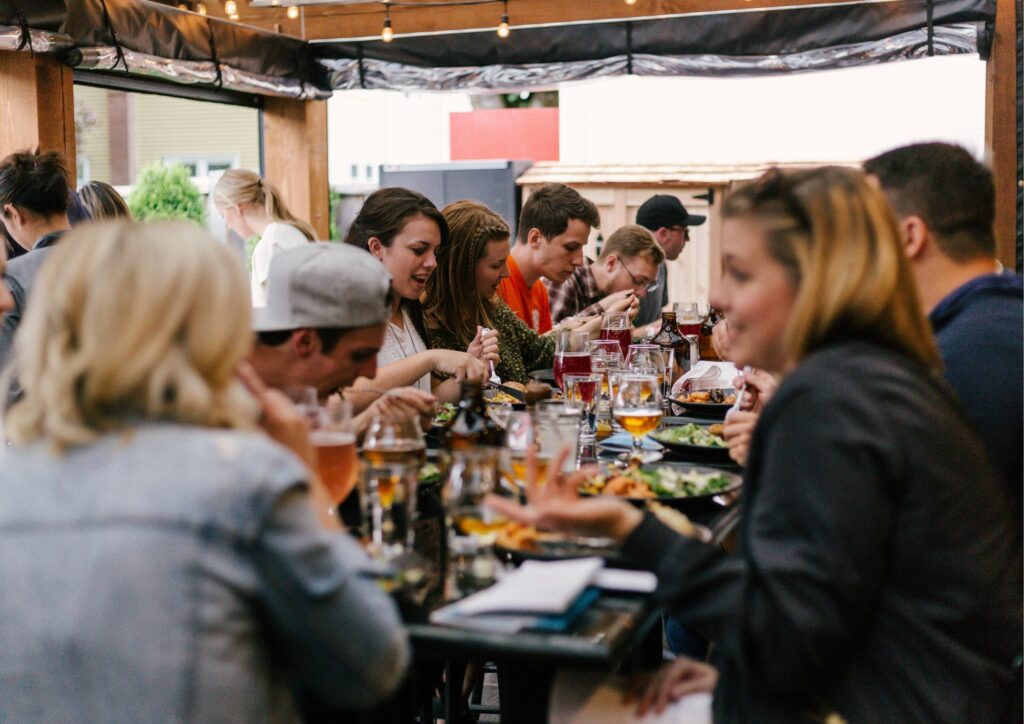
Handling Equipment
Restaurant health and safety policies must include clear instructions on how to handle items like knives, hot pans, and stoves. Establish safe systems of work so that all employees know the best way to complete specific tasks as safely as possible to help reduce accidents. Even seemingly simple tasks, such as lifting heavy boxes, can be a risk, so awareness of proper manual handling techniques is essential.
Training
Including details about any staff training, such as first aid training, in your restaurant risk assessment is key to ensuring everyone involved contributes to, and complies with, restaurant health and safety.
Restaurant Health And Safety Checklist
I
In the UK, a restaurant health and safety check is routinely performed around once every six months by a Food Safety Officer or an Environmental Health Officer from the local council. In order to pass the health and safety check, restaurants will need to demonstrate a number of things. A typical restaurant health and safety checklist will include the below:
- The workplace is clean and free of pests
- Equipment is cleaned regularly and proficiently
- Separate sinks are used to clean equipment and hands
- Fridges are all at the correct temperatures so that food is stored safely
- Storage and preparation areas are clean and well organised to avoid cross contamination
- Any protective equipment, such as hair nets, are in use
- There is a first aid kit readily available
- Cleaning cloths are only used once, cleaning products are well-stocked,, and there is a cleaning procedure in place
- There is a stock control system to keep track of food dates and rotations
- Food is thawed and reheated according to safe preparation procedures
- Evidence can be supplied to prove all of the above
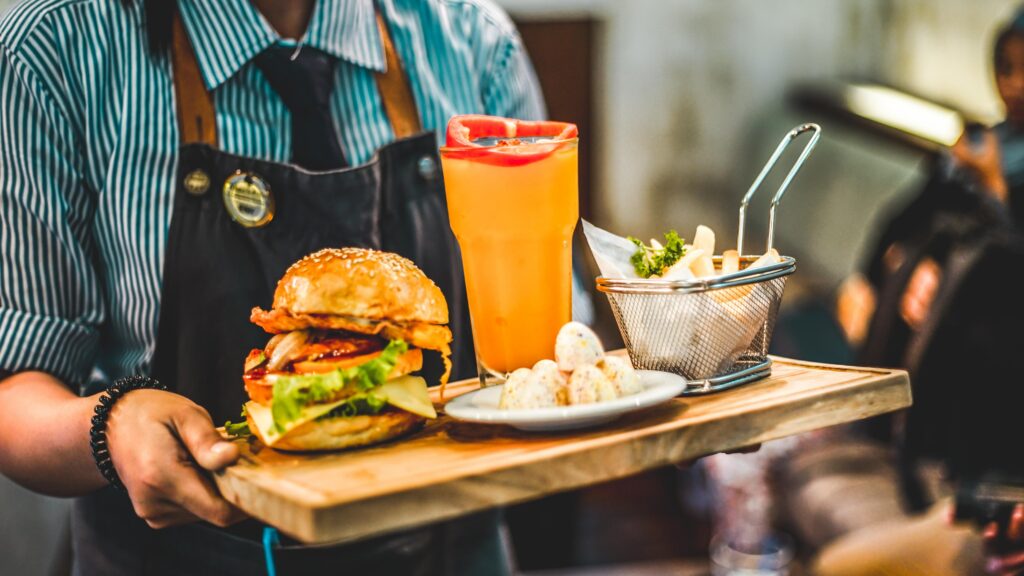
Having a restaurant health and safety checklist to hand can help restaurants to understand what they should be including in their health and safety policies and risk assessments. It is not a tick sheet to help restaurants do the bare minimum, but a guide that can be built on to produce an exhaustive restaurant health and safety document.
Restaurant Risk Assessment Example
All risks assessments, whether for a restaurant, warehouse or a care home, will follow a similar structure and should include:
- Identify why the risk assessment is being carried out
- Gather information and any supporting documents regarding previous risk assessments or records of accidents
- Identify the specific risks in a restaurant and any unique to the venue
- Define who could be harmed by each of these hazards, whether it’s staff or visitors
- Evaluate the potential consequences and how high the risk of injury actually is
- Decide on the correct control measures to minimise the risks and implement them
- Record all of this information in the restaurant risk assessment document
- Communicate findings to existing staff and new starters
- Regularly review the risk assessment, monitor any changes to be made, and update documents accordingly
A restaurant risk assessment example might follow this format, with more or less information depending on the size of the establishment and the hazards:
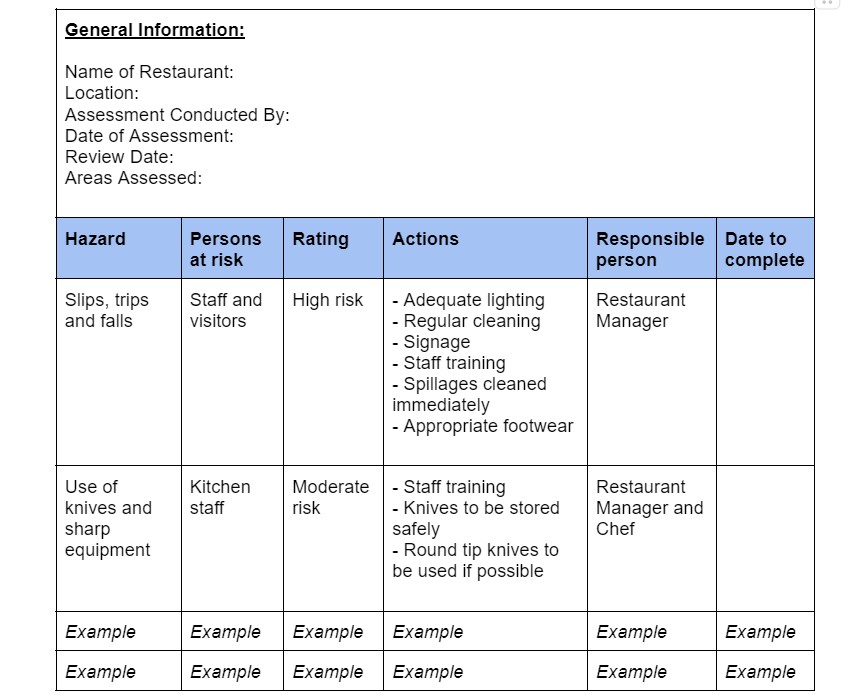
Restaurant Health And Safety From Rhino Safety
With such a huge number of factors to consider with restaurant health and safety, appointing experts to manage it all ensures that everything is taken care of and your business adheres to all current legislation. Keeping staff and diners safe is the first priority for restaurant owners, and a safe restaurant is a more successful one.
Rhino Safety handles all aspects of health and safety across many sectors, including hospitality health and safety. We can provide health and safety audits for your restaurant business, as well as complete risk assessments and monitor and evaluate them on an ongoing basis.
Get in touch for a no obligation quote and to find out how easy we make it to manage your business’ health and safety.
